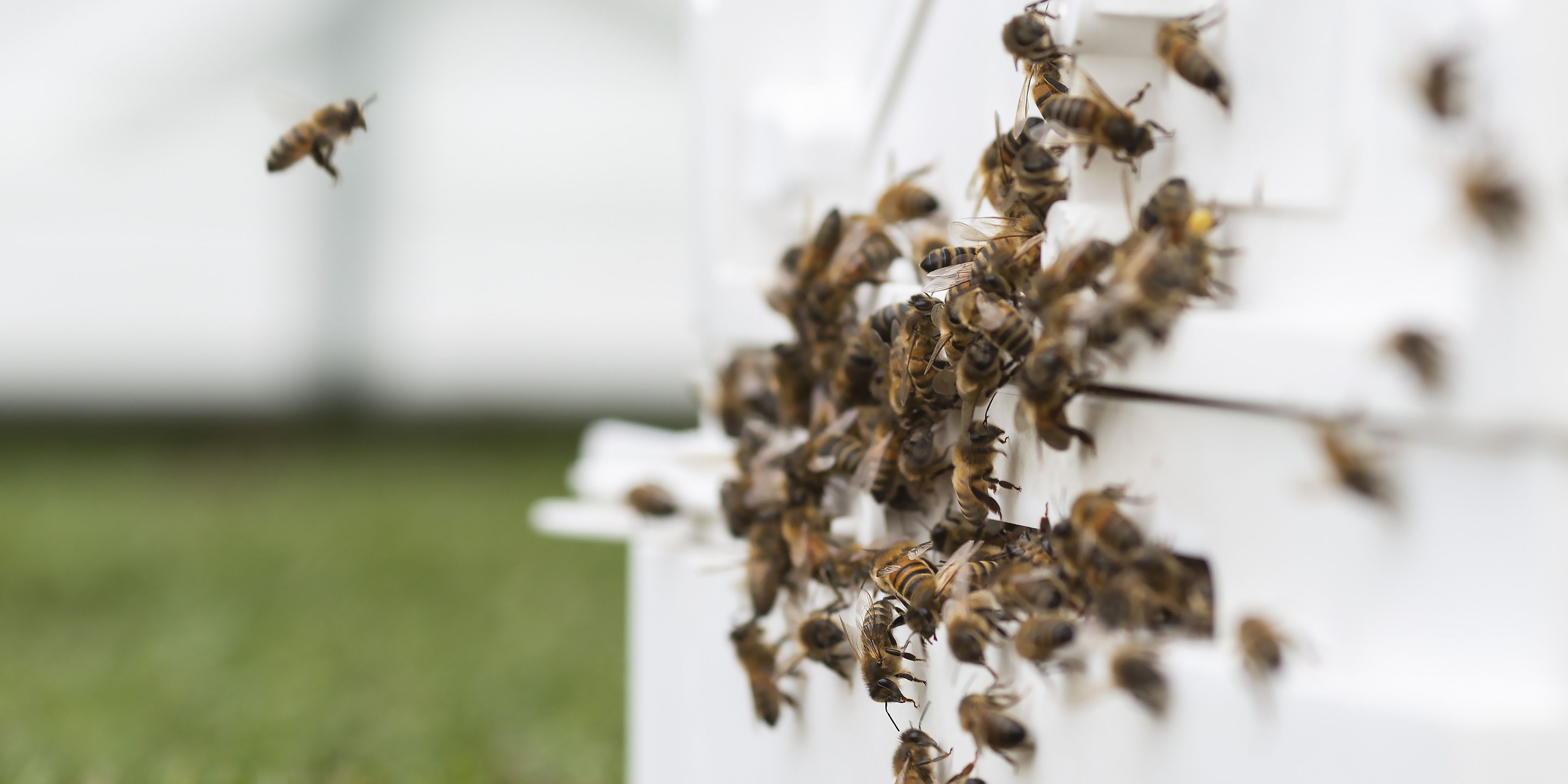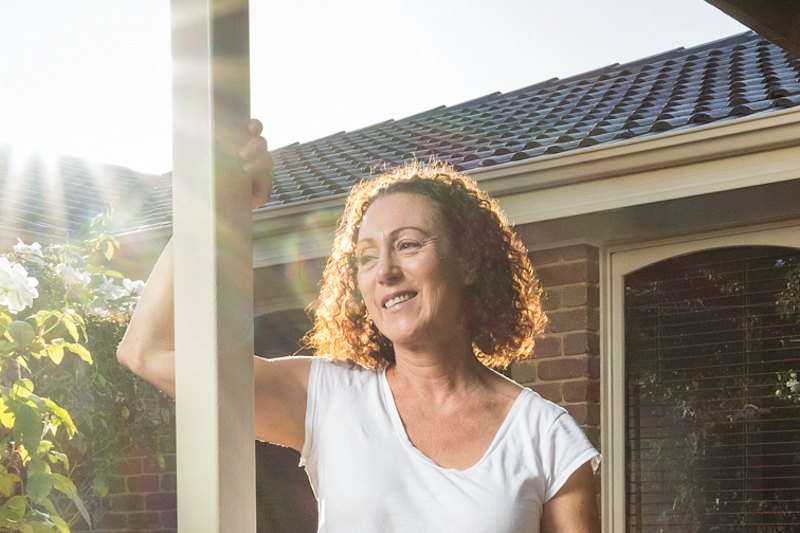Backyard beekeeping is growing in popularity and easier than it looks

Neighbourhoods hum with many noises, from lawnmowers and traffic to backyard bee hives.
The growing interest in beekeeping comes amid a trend to growing and eating healthy, local food, as well as the invention of a new type of hive, and an awareness of the importance of bees to the planet.
Reports of declining bee numbers around the world have blamed a range of factors including pesticides, loss of habitat, Varroa mite and a changing climate, ostensibly causing what is called Colony Collapse Disorder.
And shoppers found out last year that many supermarket honey brands aren’t pure honey.
Several years ago, a hive arrived for my birthday. I knew little about bees, but had expressed a mild interest in hive owning. I now manage five – it’s hard to stop expanding once the bug bites … or stings.
My first hive was a Flow. This Australian invention by father-son duo Cedar and Stuart Anderson, first released in 2015, was a revolutionary design.
Honey is harvested by inserting a “key” into the hive back, effectively splitting the honeycomb diagonally, then holding a jar at the bottom of the frame to collect the bounty.
The bees are undisturbed by this process – saving a lot of stickiness, time and presenting far less chance of being stung.
There are more than 65,000 Flow hives in use worldwide now, the company says.

I used to feel that sometimes, when around serious, old-school beekeepers, I had to disclose my Flow ownership quietly.
Traditionalists were worried people wouldn’t take care of the bees properly because harvesting was so easy, plus plastic frames weren’t ideal for the bees and that colder climates may not suit them.
While the plastic element bothered me a little, I was willing to give it a crack because the concept was so intriguing.
I read books and attended a course on beginner beekeeping and I looked into the legal requirements of hive owning.
This is paramount because Australia is the only continent (aside from Antarctica) that is yet to be infected with the deadly Varroa mite, although we had a close escape in 2018 in Port Melbourne.
Owners need to register their hives, which is free in Victoria, so government agencies know who to contact when outbreaks of disease occur. It’s protecting the bees and our food production industry.
Councils also have requirements about hive ownership – for example, we had to extend the height of our fences.
We also talked to our neighbours beforehand but they love it as their vegetable gardens are now highly productive and they get handed jars of honey!
Opening the hive is something a new beekeeper should do regularly to get the hang of the process and also to get to know the bees.
It’s my favourite part because you get to see the workings of an incredible super-organism.
I get to see bees doing the waggle dance, which is fascinating. I try to spot the egg-laying queen – very similar to playing Where’s Wally? and not possible every time, especially in a hive at peak capacity.
I get to see bees hatching, mortuary bees removing dead bodies, bees passing honey to each other and the hive just going about a business which is usually locked away in darkness.
So, if you’ve ever considered owning a hive, do it!
Backyard beekeeping is growing in popularity, which is important because the average age of commercial beekeepers is around 60 and we have to hope some who start off as hobbyists make a move into the big time.
I love my Flow hive, but now I’ve expanded I’ve moved into a mixture of Flow and traditional Langstroth hives for cost reasons. Langstroths are the most common type of hive, consisting of boxes with frames inserted into them – they’re very cheap and simple to set up.
So, next time you sit down to honey on toast, give thanks to the bees that worked so hard to make it.
After that, plant some flowers in your garden for them, try to use organic pest-control methods, decide to buy only pure and local honey and even consider taking up beekeeping yourself – because a world without bees would be a very desolate place indeed.
We recommend
We thought you might like
States
Capital Cities
Capital Cities - Rentals
Popular Areas
Allhomes
More







